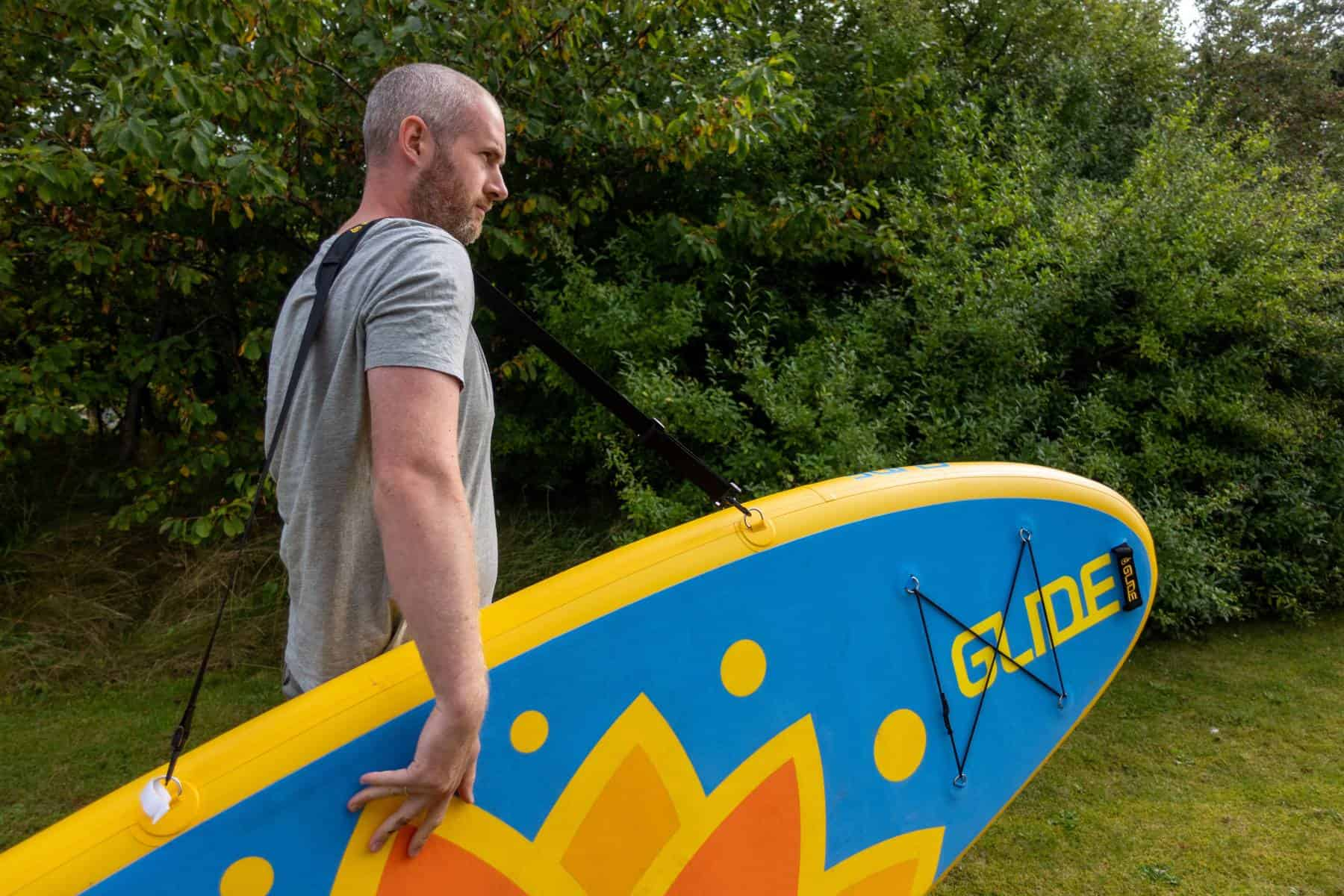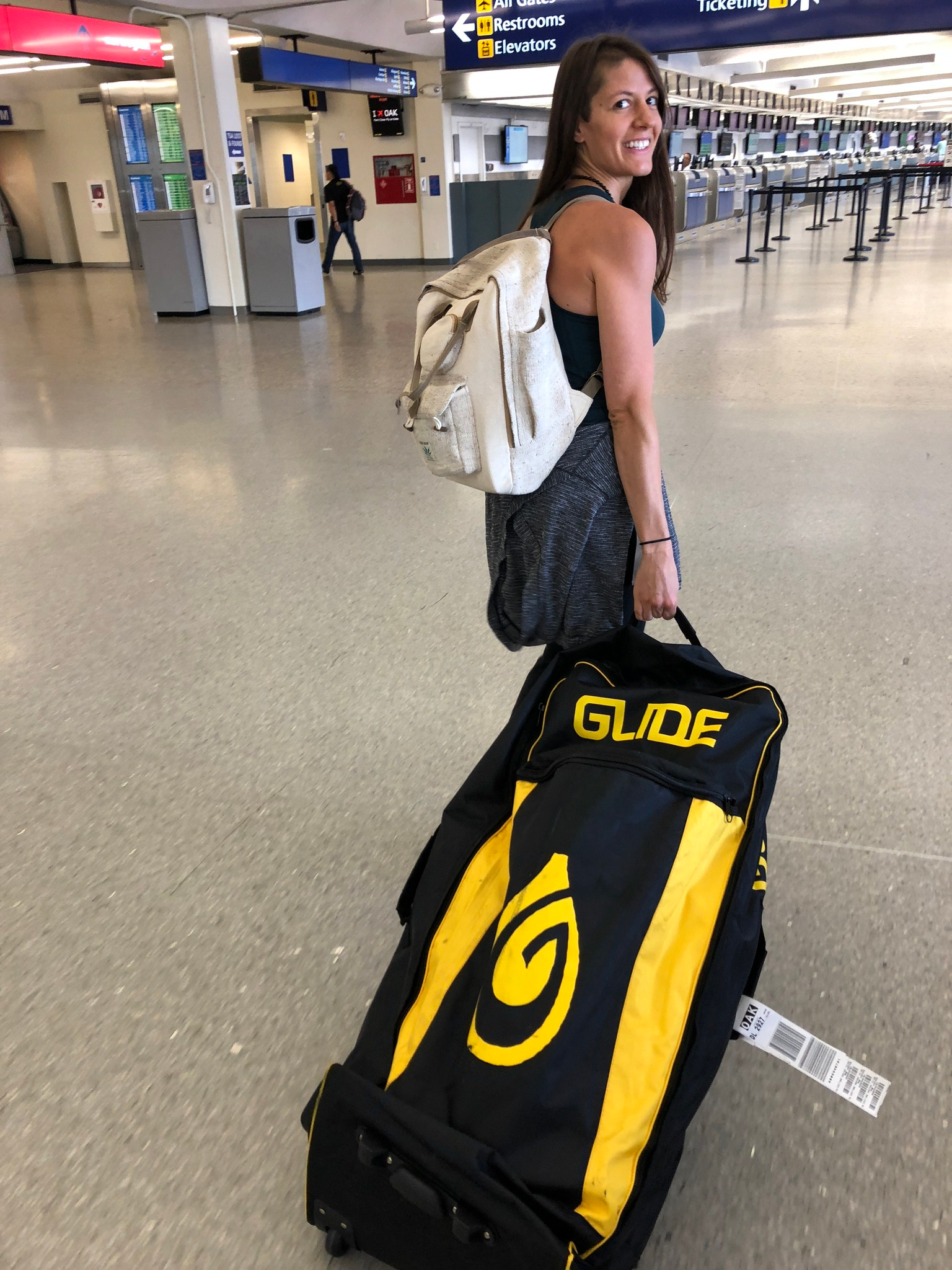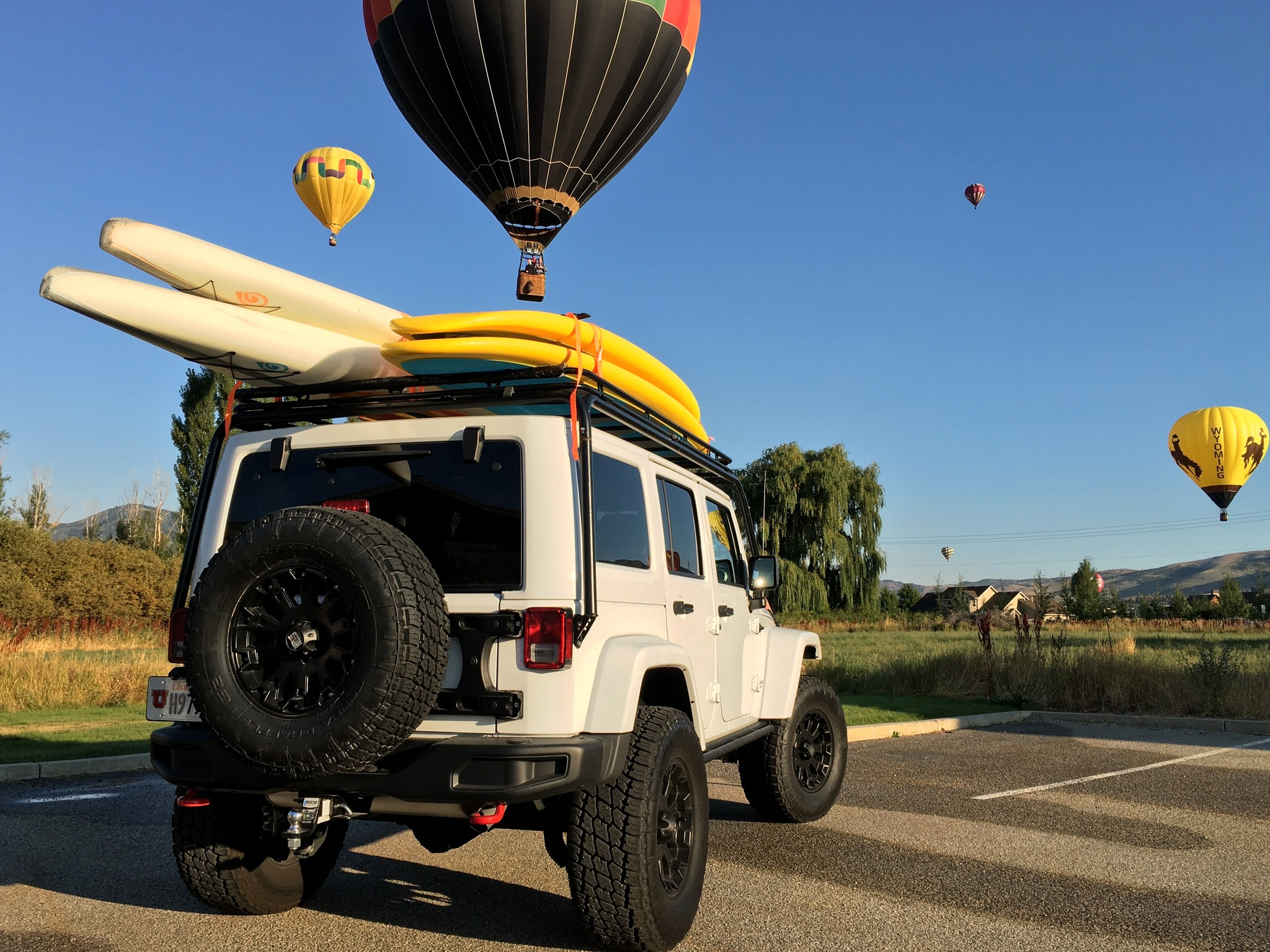
Transporting a Paddle Board Safely: Complete Guide
Discover how to store your paddle board safely year-round. Clean, dry, and protect your SUP after transport to keep it ready for every new adventure.
Learning how to transport a paddle board safely keeps your SUP performing and looking its best.
Use padded racks or soft racks, secure with cam straps, protect from UV and wind, and follow legal weight and flag rules.
Whether you drive, fly, or roll your board to the water, the right method ensures your SUP stays damage-free and adventure-ready.
Table of contents
Transporting a stand-up paddle board (SUP) doesn’t have to be stressful. Whether you’re driving five miles to a local lake or embarking on a coastal road trip, the right setup keeps your board secure and damage-free. From roof racks to inflatable options, this guide walks you through every safe, simple way to move your board from home to water—and back again.

Choose the Right Paddle Board for Transport
Before you think about straps and racks, the type of paddle board you own matters.
Hard boards offer top-tier performance but require more care in transport. Their rigid design makes them heavier and prone to dings if mishandled.
Inflatable boards (iSUPs), like Glide’s O2 Retro and Lotus Elite, deflate into a backpack-sized bag—perfect for cars without roof racks or paddlers on the go.
If you live in an apartment or drive a compact vehicle, an inflatable board will simplify your life immensely.
issues so you can repair them before long-term storage.
Use Proper Equipment
Your board is an investment—protect it accordingly.
Roof racks: Fixed crossbars with padded SUP cradles are the gold standard for solid boards. They keep the deck safe and distribute weight evenly.
Soft racks or foam blocks: Great for short trips or when your car doesn’t have rails. Just keep speeds moderate and check straps frequently.
SUP trolleys: Ideal for heavier boards or longer walks to the water. Look for wide “beach wheels” that roll easily on sand.
Whatever you use, cam straps are mandatory. Never use ratchet straps; they tighten too aggressively and can crush your rails.
Loading a Paddle Board on a Roof Rack
Proper loading technique prevents most transport mishaps.
Position the board deck-down, fin forward. This reduces lift from wind.
Center the board between the racks, resting it on padding.
Loop cam straps over each bar and thread through the buckle—pull snug, not tight.
For long drives or crosswinds, add bow and stern lines to your bumper anchors for extra stability.
Always check strap tension again after 10–15 minutes on the road.
Pro tip: If you’re carrying two boards, stack them deck-to-deck with a towel or foam pad between them to prevent rubbing.
Transporting Without a Roof Rack
No rack? No problem.
Soft Racks & Foam Blocks
Attach foam pads to your roof, place the board deck-down, and secure with cam straps running through your open doors. Keep your speed under 55 mph and re-tighten straps every 20 minutes.
Inside the Car
Inflatable SUPs can ride comfortably inside most vehicles. Roll or fold your deflated board, store it in its carry bag, and keep sharp objects away from it.
Truck Bed
Lay the board flat with a tailgate pad and secure it with two straps—one at the tailgate, one farther in. If your board extends past the tailgate, attach a red safety flag as required by law.

Airline or Long-Distance Travel
Inflatable boards are made for travel.
Deflate completely, roll loosely, and pack in a padded travel bag.
Include your pump, paddle, leash, and fins in checked luggage.
Check your airline’s sports equipment policy—most treat iSUPs as standard baggage.
For hard boards, invest in a high-quality travel bag with rail padding. Add “fragile” tags and take pictures before check-in for peace of mind.
Protecting Your Board During Transport
Board bags: Shield from sun, dust, and rocks kicked up from the road.
Nose/tail guards: Prevent dings when loading and unloading.
Remove fins: Always—this avoids bending or cracking during transit.
Avoid overhang pressure: Don’t cinch down too hard or let heavy items press on your board.
Remember: UV and heat damage can occur even during a quick lunch stop, so park in the shade whenever possible.
Weight & Legal Considerations
Always check your vehicle’s roof-load limit and your rack manufacturer’s specs. Exceeding weight capacity can damage both the rack and your vehicle.
For boards that extend beyond your car’s rear bumper, most states require a red flag during daylight and a red light at night. It’s a small step that prevents tickets and accidents.

Maintenance for Transport Gear
Regular maintenance keeps your transport setup reliable.
Inspect roof-rack bolts and pads for rust or cracks.
Replace frayed straps immediately.
Rinse your trolley or straps after exposure to saltwater.
Keep cam-buckle springs lightly oiled to prevent corrosion.
If you travel frequently, consider upgrading to locking straps for added security when leaving boards on your vehicle.
Final Thoughts on Transporting a Paddle Board
Transporting your paddle board safely comes down to preparation, protection, and patience. Choose the right rack or bag, load carefully, and always double-check your setup before hitting the road. With a little care, your SUP will arrive ready for adventure every single time.
Once you’re home, finish the cycle— store your board correctly to keep it in top shape. Read our companion article, [5 Tips to Store Your Paddle Board Over the Winter (or Any Season)], for a complete care routine.
FAQs
Fin forward or back on the roof?
Either—with proper padding. Many prefer fin forward, deck down; just ensure the leading edge is supported and straps don’t crush the rail.
Are ratchet straps okay?
No. Cam straps only. Ratchets over-tighten and can dent rails or stress seams.
Can I roof an iSUP in the bag?
Yes, for short trips—pad the bars and secure with cam straps. Avoid high heat and highway speeds.
How far can a board overhang?
Varies by state; if it extends past the bumper, you generally need a red flag/day and a light/night.
How tight is “tight enough”?
Snug plus a firm tug. The board shouldn’t slide, and the strap shouldn’t hum. Recheck after 10–15 minutes.





